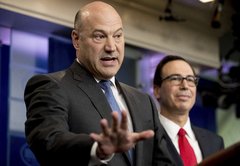Lower the business tax rate
Donald Trump
"The Trump Plan will lower the business tax rate from 35 percent to 15 percent, and eliminate the corporate alternative minimum tax."
Trump-O-Meter

Compromise

